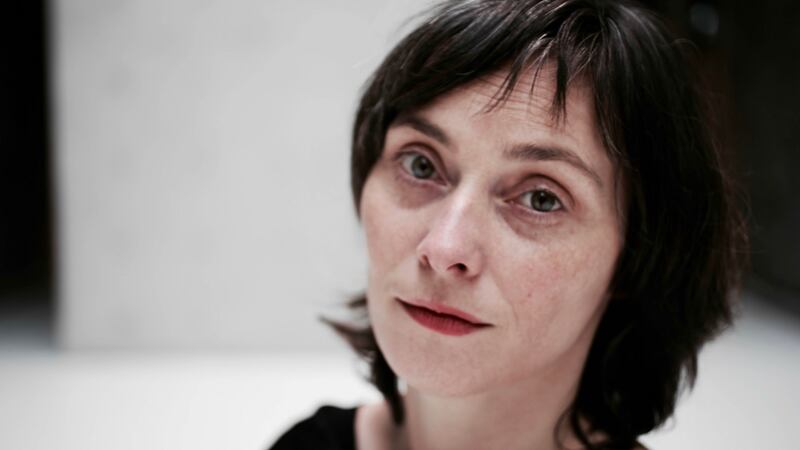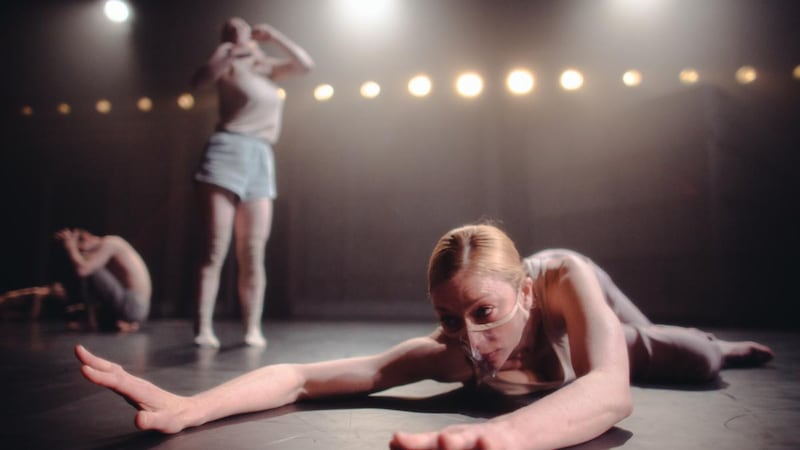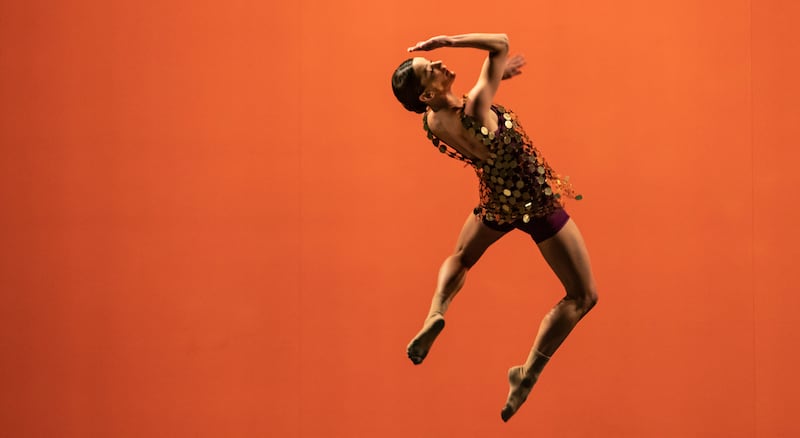Last March, lockdown was met by sudden cessation of dance activities. Abruptly, theatres went dark, upcoming productions were cancelled and future plans thrown into disarray. Artists and producers began scrambling for new ways to present work and reimagine already half-cooked projects and the pressure to produce was at its height. But moving dance online wasn’t always successful. With venues closed, many major international dance companies suddenly chose to present “world premieres” that just amounted to short videos of dancers dancing in their apartments.
For the Liz Roche Company, plans continued, always with the dangling carrot of a live performance sometime in the future. But, by the end of May, the company had already shifted three projects online: a performance, a three-month audience development programme and a two-day symposium.
"In a way, we were very naive," says Roche. "With each project we kept saying, 'It will be grand. We'll just put it online.' Looking back, it was certainly stressful, but I suppose we were lucky that everything worked out okay."
A lot of the last year has been stuck in front of the computer and I found that there was just that sort of disconnection between the body and thinking
There was more than luck involved. Crucially, Roche stayed true to each project as it moved online rather that completely reinventing them, just like her latest work, Demos, a series of short films with film-maker José Miguel Jiménez, with a live performance planned for later in the year.
Commissioned by Dublin Dance Festival and the Abbey Theatre, in partnership with Crash Ensemble and New Music Dublin, Demos deals with connectedness between the individual body and a shared place, collectivism and individual sovereignty, and negotiating physical and virtual spaces. These themes seem very Covid, but the work has been in development with composer David Coonan since 2008.
Ensemble
“The original pre-lockdown idea was to create a feeling of ensemble between dancers and musicians. What if we were just people in the space, how would we be together? Creating it in Covid times meant everybody had to become separated and it has become about something else.” For practical reasons, this version of Demos became a series of individual films, but Roche found other resonances with everyday life in lockdown.
“A lot of the last year has been stuck in front of the computer and I found that there was just that sort of disconnection between the body and thinking,” she says. Everyday adjustments like dodging others in a crowd or talking to people face-to-face were dulled, and this transferred to the dance studio.
“When we eventually got to rehearse earlier this year, it was like all of those awarenesses and the common feelings of togetherness had to unfurl in order to reconnect again. It has really highlighted things that we take for granted like one person touching another person.”

In Demos, two of the dancers are a couple, so there was the possibility of a no-social-distance duet, the first time she could choreograph a duet in over a year.
“It felt so liberating and my initial instinct was to choreograph them completely mashed up against each other. But quickly I find myself telling them to just hold hands. Or stand really close together. That was enough for me.”
The realities of social distancing meant that the performers never came together as a group and, scheduling headaches aside, the main drawback was a lack of community in the studio.

“When a group has spent time together and is really connected, we can make decisions as a group. In the past we would work on movement and ideas collaboratively, but that needs the collective energy that the group provides.”
Slower pace
Filming at the Abbey Theatre earlier this year was also tightly scheduled, with Covid protocols dictating much of each day’s work, leading to rigorous planning and an inevitable slower pace of filming.
“There was a storyboard of sorts, but both myself and José agreed that we had to try to create a sense of ‘liveness’ on the stage,” she says. The one essential element missing was the audience.
“We’ve just had to imagine the audience’s energy, although you can never really do it justice in your imagination. It is what makes the work breathe. Every moment changes when it’s in front of an audience. So we shot the film very much from the audience’s perspective, rather than letting camera angles or close-ups dictate what the viewer should see from moment to moment.” Distance and connection between bodies are central themes for Demos, but also long-standing concerns for dance.
My passion in life is making dance, and hopefully contributing to a better way forward for dance in <a class="search" href='javascript:window.parent.actionEventData({$contentId:"7.1213540", $action:"view", $target:"work"})' polopoly:contentid="7.1213540" polopoly:searchtag="tag_location">Ireland</a> and situating dancers in a place in people's lives
“For me, dance has that sense of immediacy, an intimacy without language, just bodies together in space experiencing things that we find hard to articulate. So living our day-to-day lives online has turned up the volume on questioning and exploration and interest. And togetherness is important to audiences. They come to see the incredible togetherness in an orchestra or between a group of dancers, but unfortunately they’re seeing less and less of it in life in general. It’s the one thing that we can’t practice at the moment.”
Aosdána
In October, Roche was one of 12 new members elected to Aosdána, and only the fifth choreographer. (Choreographers were only deemed eligible for admission in 2007.) Her initial feelings were gratitude towards those who worked hard towards her appointment, but she is aware of the wider significance.
"My passion in life is making dance, and hopefully contributing to a better way forward for dance in Ireland and situating dancers in a place in people's lives. If there's any way that I can encourage more choreographers to be elected over time, that's something that I would really try to do."
Ultimately, the past year has been challenging, but she admits to having learned a lot.
“I’ve had to flex other parts of my thinking, change how I work with people and gather collaborators differently. Looking back on it, I’m sort of pleased that it happened in a strange way, without at all being pleased that it happened.”
Second time online’s a charm for Dublin Dance Festival

Last year, Dublin Dance Festival was one of the first festivals to go online, which means this year it will be one of the first to go online twice. This time around, outgoing artistic director Benjamin Perchet has been able to curate – rather than hastily assemble – an online programme, and his last festival retains the customary span of performances, workshops and activities.
Four strands of content separate performances (Bright Horizons, May 18-20), events for artists and the dance community (Moving Minds, May 21-23), dance films and documentaries (Illuminating Dance, May 24-27) and activities for families (Everybody Moves, May 28-30). Many online performances and films run outside these dates, some available until June, and there are live performances planned later in the year.
"We are loyal and audacious," says Perchet. Loyal to artists that the festival has featured in the past, such as Liz Roche, Ali Chahrour and Eric Minh Cuong Castaing, but also audacious in presenting emerging choreographers such as Lasseindra Ninja.
"She is a Voguing star in France who has created her first work for an ensemble company," he says. Lasseindra is one of four choreographers in a programme by Ballet national de Marseille that sums up the eclecticism of the festival. Lucinda Childs was a founding member of the Judson Church in the 1960s, Belfast choreographer Oona Doherty is the rising star in European dance, and Tânia Carvalho is a Portuguese artist who works in dance, music and drawing.
Enthusiastic
Perchet is enthusiastic about this programme, as there would be little chance of presenting it (or the triple bill from Lyon Opera Ballet) live in a Dublin theatre due to financial constraints and the lack of large stages. Crystal Pite, whose Betroffenheit was the stand-out performance at the 2016 festival, features in Revisor, based on Gogol's The Government Inspector. In addition, Dyas is a new duet filmed in St Patrick's Cathedral by Justine Doswell, and there are four festival commissions from Ali Chahrour, Cassiel Gaube, Eric Minh Cuong Castaing and Ginevra Panzetti/ Enrico Ticconi.

Behind-the-scenes films of flamenco star Rocío Molina and choreographer Jirí Kylián are highlights of the documentary offerings, but a must-see is Dancing at Dusk – a moment with Pina Bausch's The Rite of Spring. The 1975 classic was filmed on a beach in Senegal on the brink of lockdown, performed by a handpicked group of 38 dancers form 14 African countries.
As Perchet departs, the Dublin Dance Festival has announced the appointment of Jazmin Chiodi as artistic director, programming from 2022 to 2024. A native of Argentina, she has been co-director of Tipperary Dance Project for the past 12 years.










